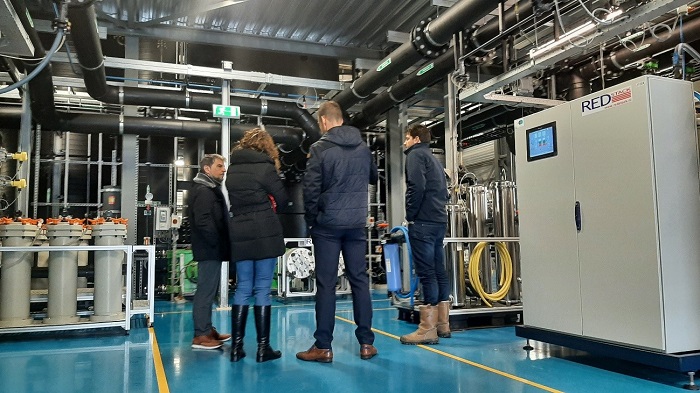To make desalination processes more sustainable by combining reverse osmosis and reverse electrodialysis (RED).
That is the basis of a new project we are working on as leaders through Sacyr Agua. This project is called Life HyReward and it uses brine from reverse osmosis processes, that utilize sea water as a high-salinity current and reclaimed waste water as a low-salinity current. The combination of the two allows us to generate electricity.
The project has the collaboration of partners from the consortium of the Dutch sister companies REDstack (a spin-off of WETSUS, the Netherland’s European center of excellence for sustainable water technology) and Pure Water Group, which offer a solid base of specialized knowledge in the development and commercialization of electromembrane technologies.

Integrating RED processes with conventional reverse osmosis processes will allow to recover up to 20% of the energy used in the reverse osmosis process, generating clean and renewable energy from brine, reducing the CO2 emissions of the desalination process.
Moreover, it also reduces the brine’s salinity before dumping it back to the sea.
Reverse electrodialysis is a process to generate electric energy from the salinity gradient between two solutions of different salinity. This energy is known as blue energy, and it is completely renewable and sustainable, CO2-free.

Life HyReward
Life HyReward (LIFE20 CCA/ES/001783) is financed by the European project LIFE. This project started on November 1, 2021 and has a duration of three and a half years, and a €2.2 million budget.
The first experimental stage will be developed on the desalination plant in Alicante, run by Sacyr Agua, with the support and collaboration of the Mancomunidad de los Canales del Taibilla, owner of the facility, and will optimize RED technology, to generate power.
The second experimentation phase will be carried out in a purification plant to study the dirtying of membranes caused by waste water, as well as the possible transmission of organic micropollutants through the ionic exchange membranes.
